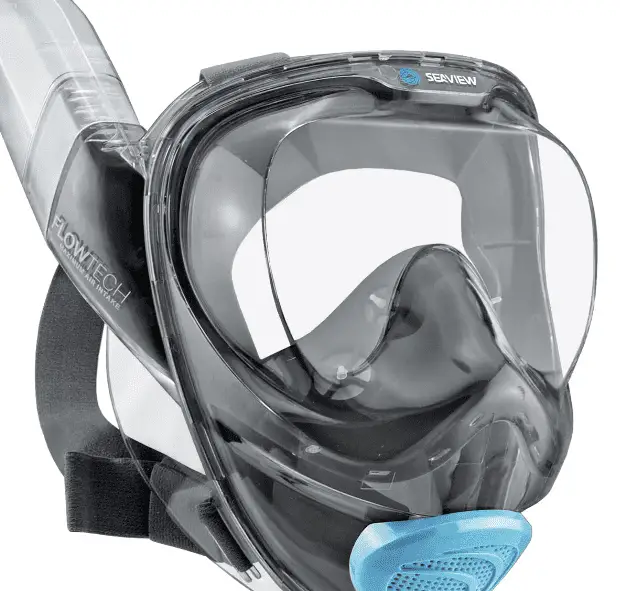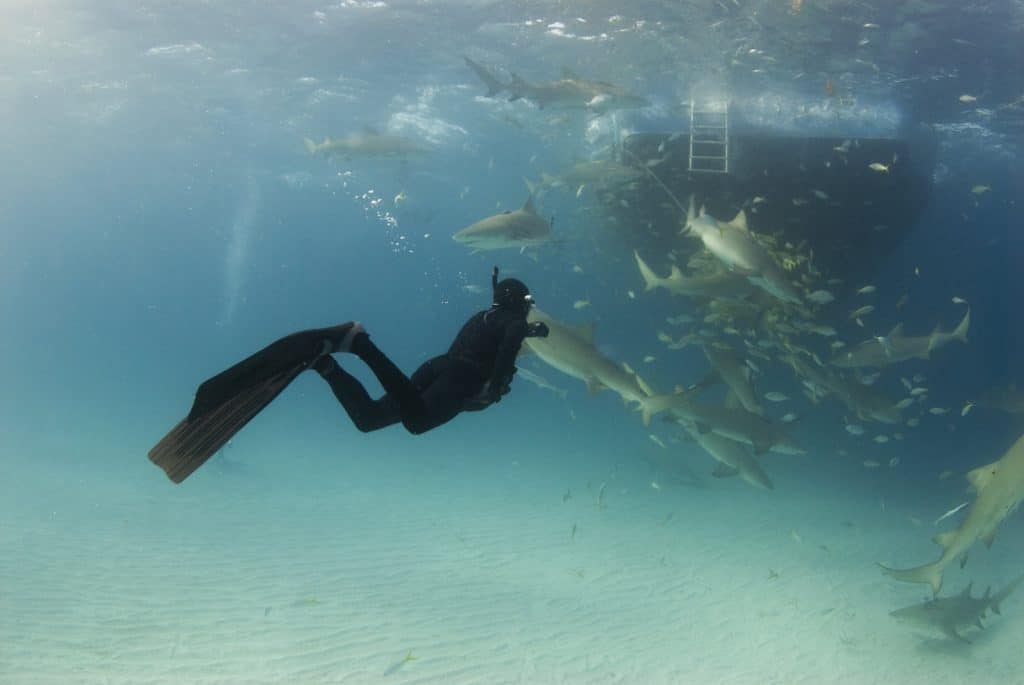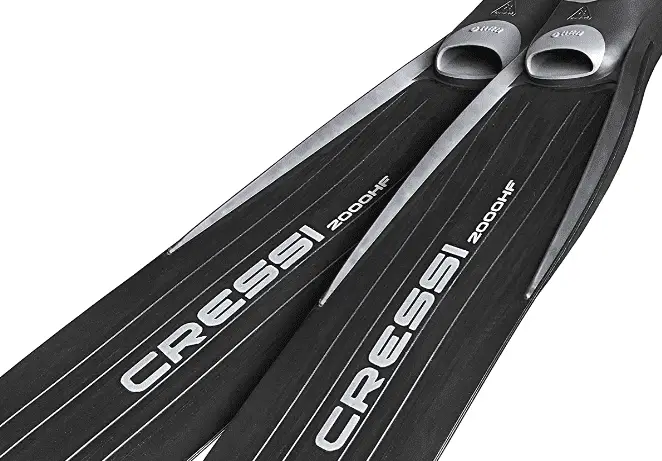Differences between Freediving, Skindiving and Snorkeling
At first glance, free diving, skin diving, and snorkeling may seem more alike than scuba diving. After all, they can be done without the use of a breathing apparatus and don’t require any special certification. So what really is the difference between them?
While all of these sports have their own awesome advantages, it’s important to know the differences between the two before you go out and stock up on gear. Here’s an in-depth look at snorkeling, skin-diving, and freediving.
Snorkeling
One of the greatest things about snorkeling is that it takes very little background and only a few pieces of equipment to get started. At the very least, if you’ve got a mask, a clear day, and some time on your hands, you’re ready to start exploring. Of course, there are a few ways to make your experience even better, so here are the basics of snorkeling.
The Equipment. Because snorkeling is such a low-maintenance activity, there’s not a lot of training that you can do to improve your experience. The equipment you choose, on the other hand, can make your time in the water more enjoyable.
Your first upgrade: your mask. You may think that it’s good enough to just borrow a mask from a friend, but in the case that it doesn’t fit, you’ll probably find yourself adjusting and readjusting when you should be focusing on that gorgeous reef. It’s no use to save the money on buying a mask when your snorkeling experience gets ruined by a leaky mask.

Instead, take the time to find a mask that actually fits you. Whether you want a mask with two lenses (which you definitely want when you need a prescription dive mask!) or just one doesn’t really matter. It’s important how the skirt (or the soft silicone that covers your nose and cheeks) forms to your face do. The first thing to look out for is whether the mask stays on your face without you having to hold it. If it stays, that’s a good sign.
Next is to test the skirt. Although it may seem silly, the best way to do this is to test how the mask will fit when you have the snorkel in your mouth (or, in other words, when your facial muscles are activated). Since you don’t want to be putting your mouth on the snorkels in the store, it might be a good idea to borrow a friend’s. When you’re trying on different masks, you want something that forms tightly to your nose and doesn’t allow any air to escape when you try blowing out through your nose.
Since a few years, you can also get full-face snorkel masks. These snorkel goggles do not just cover your eyes and nose but your whole face. This has tremendous advantages for snorkeling as you can breathe both through your nose and your mouth. These masks have the snorkel integrated and usually, they have dry snorkels. That way you won’t swallow any water by accident! In the early days and with cheap masks there were some reported incidents of CO2 building up in the breathing chamber. These dangers of full-face snorkeling masks have been diminished with modern designs that take that risk into consideration.
So now that you have your perfect mask, it’s time to consider fins. The best model for snorkeling on the market these days is the standard scuba fins or the travel snorkeling fins. The latter are short enough to allow for small, versatile movements around shallow underwater landscapes, and allow for easy maneuverability getting in and out the boat or walking up onto the shore – Is Snorkeling Safe while Pregnant?
Pro-tip: After you’ve purchased the right gear, here are a few extra bits of knowledge that will make snorkeling really enjoyable.
Sunscreen. Since this sport requires you to be relatively close to the surface, you really need to protect your skin.
Don’t lose yourself, completely. It can be easy to allow yourself to drift off and forget about where you’re headed. Every once in a while, you need to reorient yourself and make sure you haven’t strayed too far from your boat or snorkeling buddies.
Skindiving
Skin diving is a term that’s not used much anymore. It is basically snorkeling where you dive down while you hold your breath to have a closer look at aquatic life.
The purpose of skin diving is not to dive as deep as possible but to go as deep as necessary to get a better view of life underwater. Skin diving is somewhat a mix of snorkeling and freediving with the difference that you dive down at times while typically moving around snorkeling on the top of the water.

As skin diving is part of snorkeling, it does not require a scuba tank, wetsuit, or even a drysuit! The fins used are typically snorkeling fins. The snorkel is used when snorkeling and you want to use a dry snorkel to prevent yourself from sucking in water through the snorkel when diving down. Skin divers do certainly also wear masks.
The masks for skin diving are where it becomes interesting though. Traditional snorkeling masks are basically the same as scuba dive masks. They have a low volume which makes it pretty easy to dive down. The newer full face snorkel masks (like the Seaview 180 Degree V2 from Wildhorn Outfitters), unfortunately, have usually pretty high volume and as such make it hard to nearly impossible to dive down. At least it’s not easy to dive anymore with such a snorkel mask that covers the whole face.
The lines between snorkeling, skin diving, and freediving are somewhat blurry. Most people that go snorkeling will automatically skin dive when they see something of interest in the water underneath them. Yet most will not dive down into the depths that require or define freediving.
Freediving
Although the differences in gear for freediving, skindiving, and snorkeling are only slight, they are completely separate sports. Whereas snorkeling is all about exploring the water calmly, freediving is not a passive activity.
So what exactly is it? Freediving is diving without the use of a breathing apparatus. As a freediver, you rely only on your equipment, your strong swimming ability, and your capacity to hold your breath underwater. Generally, your dive is only going to last three to four minutes, but that can be enough time to explore depths that you never would have imagined possible without scuba gear.
Free diving is seen more as a competitive sport rather than a recreational activity. Divers compete with others and themselves to be faster, spend more time underwater, and reach greater depths.
But while some see this sport as dangerous, freediving truly allows you to cultivate a different relationship with life underwater, one built on endurance and excitement. It also fosters respect for this challenging environment and an appreciation for its beauty.
Equipment. If we encouraged you to find a well-fitting mask for snorkeling, we’re going to take it a step further and insist that your mask is perfect for freediving. With only a few minutes underwater, you do not want to be dealing with a leak or fogging issue.
Another key distinction between snorkeling and freediving is the length of the fin. Freediving fins are very long and stiff so that your kick is powerful and energy-efficient.

One last thing that you may want to invest in would be diving weights. You’re going to want to calculate the amount of weight that is appropriate for your skill level and the depth that you’re able to reach.
Freedivers wear wetsuits, unlike skin divers that can go into the water with no protective gear (depending on where they are) and might use no fins, or any kind of snorkeling or scuba diving fins. Free divers use longer fins that can help them with speed and depth.
A mono-fin is one that mimics the shape of a fish’s anatomy, connecting both feet into a single fin; this is more often used by advanced divers and swimmers.
Training. There are many aspects to freediving training that will make you a successful diver. On the one hand, you must be in optimal physical shape. This means endurance training, nutrition, flexibility, and strength.
You’ll also need to train your body to become accustomed to the depths that you’ll be diving. One of the most important things that you must gauge is how adept your body is at equalizing your ears because you cannot push yourself beyond this limit.
Another important part of the training will be to exercise without access to air. This is not only difficult but inherently panic-inducing. Relaxation exercises are key to successful freediving.
Freediving is used for many underwater sports other than just diving. These include the aquathlon, octopush (underwater hockey), synchronized swimming, and competitive spearfishing just to name a few.
What will you choose?
Despite the fact that neither snorkeling, skin diving, or freediving uses a breathing apparatus, the activities could not be more different. Whereas snorkeling is for a tranquil day of taking in the sights, freediving is much more about endurance and adrenaline. Skin diving is somewhere in the middle but tends to be more serene like snorkeling and less extreme like freediving!
While all are highly enjoyable, you’ll have to choose for yourself whether snorkeling/skin diving compared to freediving is right for you. With either one, you’re sure to have a great underwater experience!
Neither is working for extended periods underwater. In that case, scuba diving is the better option as you can see the marine life up close and for long periods. However, the equipment required by scuba divers is exponentially more than what you need for skin diving/freediving where you still do get a great view of the marine life underwater.

Click here for more posts on scuba diving, freediving, skin diving, and snorkeling!

